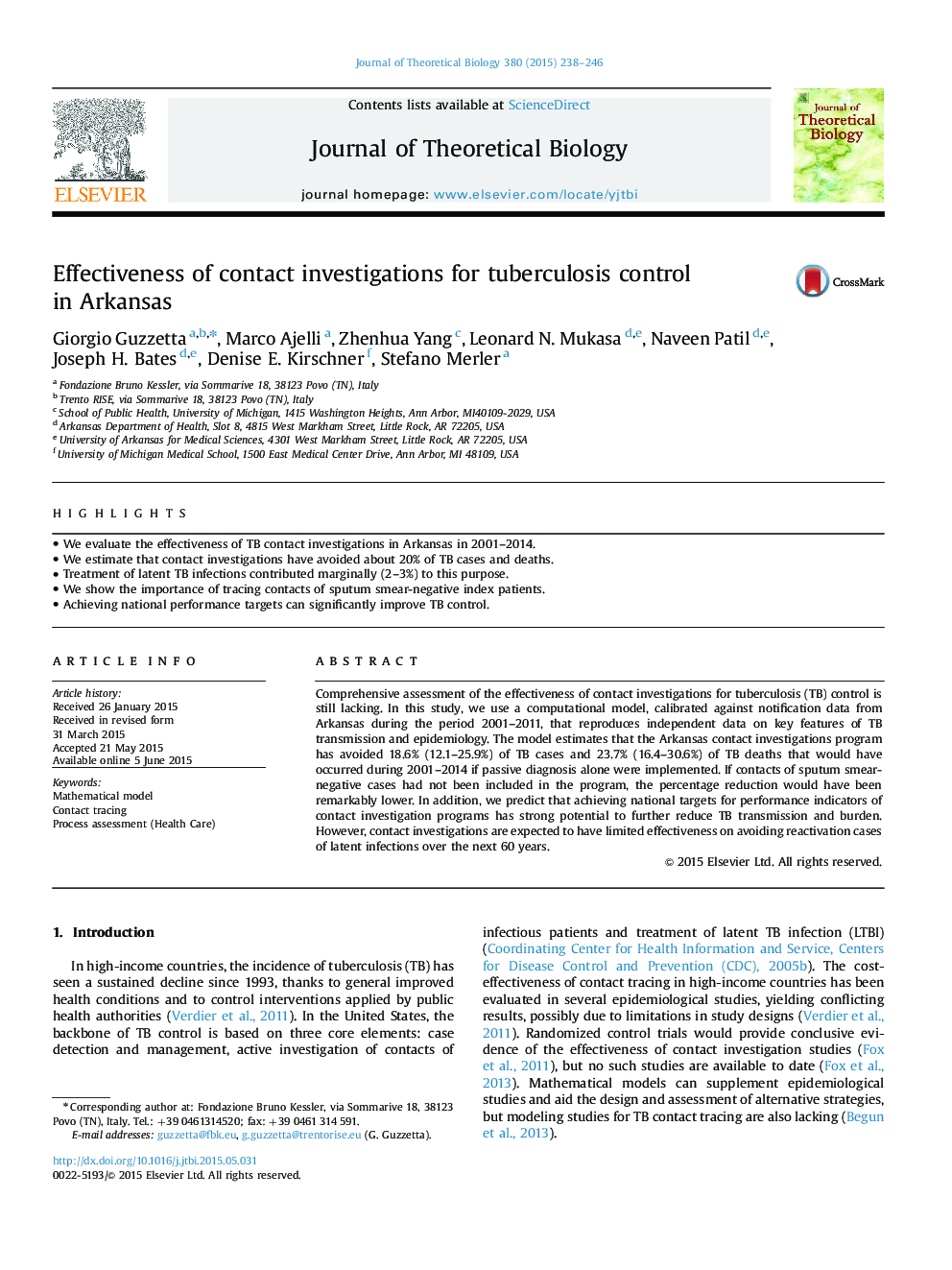| Article ID | Journal | Published Year | Pages | File Type |
|---|---|---|---|---|
| 6369625 | Journal of Theoretical Biology | 2015 | 9 Pages |
Abstract
Comprehensive assessment of the effectiveness of contact investigations for tuberculosis (TB) control is still lacking. In this study, we use a computational model, calibrated against notification data from Arkansas during the period 2001-2011, that reproduces independent data on key features of TB transmission and epidemiology. The model estimates that the Arkansas contact investigations program has avoided 18.6% (12.1-25.9%) of TB cases and 23.7% (16.4-30.6%) of TB deaths that would have occurred during 2001-2014 if passive diagnosis alone were implemented. If contacts of sputum smear-negative cases had not been included in the program, the percentage reduction would have been remarkably lower. In addition, we predict that achieving national targets for performance indicators of contact investigation programs has strong potential to further reduce TB transmission and burden. However, contact investigations are expected to have limited effectiveness on avoiding reactivation cases of latent infections over the next 60 years.
Related Topics
Life Sciences
Agricultural and Biological Sciences
Agricultural and Biological Sciences (General)
Authors
Giorgio Guzzetta, Marco Ajelli, Zhenhua Yang, Leonard N. Mukasa, Naveen Patil, Joseph H. Bates, Denise E. Kirschner, Stefano Merler,
